- europages
- >
- COMPANIES - SUPPLIERS - SERVICE PROVIDERS
- >
- brazing and welding
Results for
Brazing and welding - Import export
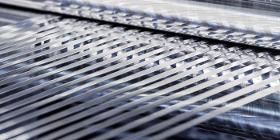
AMETEK SPECIALTY METAL PRODUCTS
United States
SS 302 is an austenitic Chromium-Nickel stainless steel offering the optimum combination of corrosion resistance, strength and ductility. These attributes make it a favorite for many mechanical switch components, as well as surgical instruments. The alloy is readily formed in the annealed temper. SS 302 may be joined by all commonly used brazing and welding methods including oxyacetylene. Caution should be used to avoid cooling slowly through the range of 900° to 1600°F where carbide network could form and reduce corrosion resistance. This characteristic is diminished due to the typically low carbon composition of Hamilton’s SS 302. The corrosive resistance to acids is generally very good with the exception of halogen acids.
Request for a quote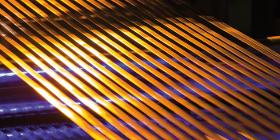
AMETEK SPECIALTY METAL PRODUCTS
United States
Beryllium Copper 25 is a Copper base alloy with the capability of being strengthened by precipitation heat treatment. The alloy furnishes the best combination of electrical conductivity, corrosion resistance and mechanical strength necessary for numerous electronic and electromechanical devices. The alloy is quite satisfactory for fabrication with good formability and joining characteristics. Forming is readily accomplished from the annealed temper. Severe bending will be less successful from hard or heat treated tempers and requires large fold radius ratios. Beryllium Copper 25 is able to be soldered, brazed, and welded by most standard techniques. The brazing temperature must be kept under 1450º F and cycle time minimized to avoid loss of heat treated strength. Heat treating should be performed subsequent to welding to obtain uniform high strength. The alloy is not susceptible to an increase in magnetic attraction from plastic deformation during service
Request for a quote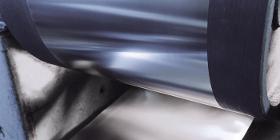
AMETEK SPECIALTY METAL PRODUCTS
United States
SS 316L is an austenitic Chromium-Nickel stainless steel with superior corrosion resistance. The low carbon content reduces susceptibility to carbide precipitation during welding. This permits usage in severe corrosive environments such as isolator diaphragms, and metal diaphragms, for both aerospace sensors and burst discs. The alloy can be formed from the annealed temper by stamping and deep drawing. Joining is accomplished by brazing and welding. The Molybdenum is the alloy composition provides excellent strength up through 800° F in applications. Available Sizes: SS 316L is available from Hamilton Precision Metals as strip product from 0.0005” to 0.050” (0.0127 mm to 1.27 mm) in widths up to 12.0” (304.8 mm). It is also available in foil as thin as 0.000200” (0.00508 mm) in widths of 4.0” (101.6 mm) maximum. The material conforms to AMS 5507, ASTM A240, FED QQS766 and UNS S31603.
Request for a quote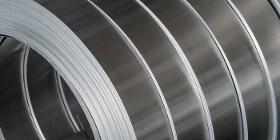
AMETEK SPECIALTY METAL PRODUCTS
United States
SS 304L is an austenitic Chromium-Nickel stainless steel offering the optimum combination of corrosion resistance, strength, and ductility. These attributes make it a favorite for many mechanical switch components, and use in surgical instruments. Low carbon content reduces susceptibility to carbide precipitation during welding. The alloy is readily formed in the annealed temper.SS 304L may be joined by all commonly used brazing and welding methods including oxyacetylene. The corrosive resistance to acids is generally very good with the exception of halogen acids. Available Sizes: SS 304L is available from Hamilton Precision Metals as strip product in thicknesses from 0.0005” to 0.050” (0.0127 mm to 1.27 mm) in widths up to 12.0” (304.8 mm). It is also available in foil as thin as 0.000200” (0.00508 mm) in widths of 4.0” (101.6 mm) maximum. The material conforms to ASTM A240, ASTM A666, FED QQ-S-766, MIL-S-4043, UNS S30403.
Request for a quote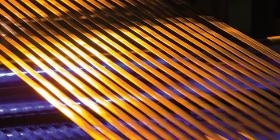
AMETEK SPECIALTY METAL PRODUCTS
United States
Phosphor Bronze A is a Copper base spring material with a good combination of strength, formability, and corrosion resistance. The material is suitable for use in certain contact springs and diaphragms. The alloy has good formability up to moderate strength. It can be soldered, silver brazed, and resistance welded. Available Sizes: Phosphor Bronze A is available from Hamilton Precision Metals as strip products in thicknesses from 0.001” to 0.020” (0.0254 mm to 0.508 mm) in widths up to 12.0” (304.8 mm). The material conforms to ASTM B 103 and UNS C51000.
Request for a quote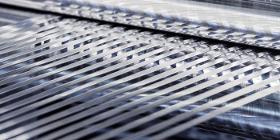
AMETEK SPECIALTY METAL PRODUCTS
United States
HPM® Ni 42 is a Nickel-Iron alloy with a thermal expansion coefficient suitable for matching to the ceramic chip in numerous miniature electronic circuits The alloy is readily formed from the annealed temper and can be welded or brazed by standard methods. The alloy is not corrosion resistant at 20°C when exposed to a moist or salt-containing atmosphere. Available Sizes: HPM® Ni 42 is available from Hamilton Precision Metals as strip product in thicknesses from 0.001” to 0.050” (0.0254 mm to 1.27 mm) in widths up to 12.0” (304.8 mm). The material conforms to ASTM F30 and UNS K94100.
Request for a quote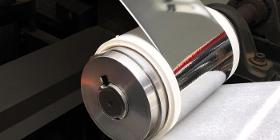
AMETEK SPECIALTY METAL PRODUCTS
United States
Rodar® is an Iron-Nickel-Cobalt alloy with an unique linear thermal expansion coefficient. It is also stable to cryogenic temperatures. This combination of characteristics has prompted its application in electrical package sealing of glass/metal and ceramic/metal. Rodar® can be formed and deep drawn from the annealed temper. A 1/8 hard temper is optimum for heavy piercing.The material can be joined to other metals by welding, brazing, and soldering. The joint design must consider that Rodar® has a lower expansion coefficient than most other metals. Available Sizes: Rodar® is available from Hamilton Precision Metals as strip product in thicknesses from 0.001” to 0.060” (0.0254 mm to 1.524 mm) and width up to 12.0” (304.8 mm). The material conforms to ASTM F15, AMS 7728 and UNS K94610.
Request for a quote
AMETEK SPECIALTY METAL PRODUCTS
United States
Cu-Ni 715 is a copper-nickel alloy that is resistant to corrosion in sea water. The alloy has good fatigue strength and relatively high thermal conductivity. This alloy is used mainly for flexible metal foil heaters. The alloy is readily formed in the annealed temper, and can be joined by the standard welding, brazing and soldering processes. Available Sizes: Cu-Ni 715 is available from Hamilton Precision Metals as strip product in thicknesses from 0.0005” to 0.010” (0.0127 mm to 0.254 mm) in widths up to 12” (304.8 mm). The material conforms to ASTM B122 and UNS C71500.
Request for a quote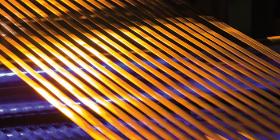
AMETEK SPECIALTY METAL PRODUCTS
United States
Copper 102 is an oxygen-free copper with extremely high electrical conductivity and good formability. These characteristics make it particularly useful for electrical connectors. Copper 102 can be deep-drawn from the annealed temper.It is corrosion resistant in normal atmosphere and water. A thin adherent oxide film forms at elevated temperatures which prevents particle contamination and enhances glass to metal seals. The Copper 102 can be readily soldered and brazed. The absence of oxygen makes welds free of inclusions. Available Sizes: Copper 102 is available from Hamilton Precision Metals as strip product in thicknesses from 0.0005” to 0.010” (0.0127 mm to 0.254 mm) in widths up to 12.0” (304.8 mm). The material conforms to ASTM B 152 and UNS C10200. It is also available in thickness less than 0.0005” (0.0127 mm) in widths up to 4.000” (101.6 mm) maximum.
Request for a quote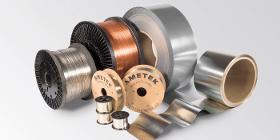
AMETEK SPECIALTY METAL PRODUCTS
United States
HPM® 600 is well suited for severe corrosive environments and is oxidation resistant through 2150°F. Such as, metal diaphragms for aerospace sensors, flexible metal foil heaters and metal diaphragms for burst discs. The strength can be increased by cold working. The material has good elevated strength retention through 800°F. The alloy is readily formed in the annealed temper, and can be joined by the standard welding, brazing and soldering processes. Available Sizes: HPM® 600 is available from Hamilton Precision Metals as strip product in thicknesses from 0.0005” to 0.050” (0.0127 mm to 1.27 mm) and width up to 12” (304.8 mm). It is also available in foil as thin as 0.000100” (0.00254 mm) in widths of 4.0” (101.6 mm) maximum. The material conforms to ASTM B168, AMS 5540, MIL N 23228 and UNS N06600.
Request for a quote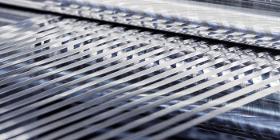
AMETEK SPECIALTY METAL PRODUCTS
United States
HPM® Ni 52 is a Nickel-Iron alloy with a thermal expansion characteristic that corresponds to soft glass. Applications include magnetic reed switches and seals that need controlled linear expansion to about 1000°F. The alloy is readily formed or deep drawn from a fine grain annealed temper. Joining can be accomplished by conventional welding or brazing techniques. Useful magnetic characteristics can be produced from a continuous strand anneal. Available Sizes: HPM® Ni 52 available from Hamilton Precision Metals as strip product in thickness from 0.001” to 0.050” (0.0254 mm to 1.27 mm) in widths up to 12.0” (304.8 mm). The material conforms to UNS N14052.
Request for a quote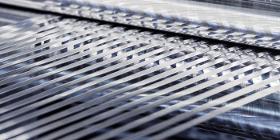
AMETEK SPECIALTY METAL PRODUCTS
United States
HPM® Ni 36 is a Nickel-Iron alloy with the lowest thermal expansion of any active alloy from -240°C to 330°C. It is selected when dimensional changes from temperature variation need to be minimized in electronic control devices, such as use within airbag igniters and precision metal stampings. The alloy can be readily formed from the annealed temper.Annealed hardness can be modified to approximately DPH 180 for best blanking characteristic. Grain size can be adjusted to provide the optimum deep drawing characteristic. It can be welded and brazed using conventional methods. Available Sizes: HPM® Ni 36 is available from Hamilton Precision Metals as strip product in thicknesses from 0.0005” to 0.025” (0.0127 mm to 0.635 mm) in widths up to 12.0” (304.8 mm). It is also available in foil as thin as 0.000100” (0.00254 mm) in widths of 4.0” (101.6 mm) maximum. The metal conforms to UNS K93603, ASTM F1684.
Request for a quote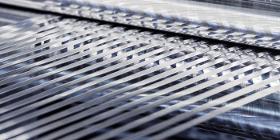
AMETEK SPECIALTY METAL PRODUCTS
United States
HPM ® 270 Nickel is the highest purity Nickel. The controlled low impurity level provides uniform and repeatable mechanical, electrical, and magnetic properties. The material has excellent corrosion resistance with high thermal and electrical conductivities. A high thermal coefficient of electrical resistance makes it suitable for strain gauges, temperature sensors, and electronic components. The alloy can be formed by all conventional cold forming methods, and can be joined by resistance welding, brazing and soldering. The corrosion resistance is generally very good in most mediums, although, it is subject to intergranular embrittlement by sulfur compounds above 315°C Available Sizes: HPM ® 270 Nickel is available from Hamilton Precision Metals as strip product in thicknesses from 0.0005” to 0.020” (0.0127 mm to 0.508 mm) in widths up to 12.0” (304.8 mm). It is available as foil as thin
Request for a quote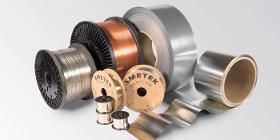
AMETEK SPECIALTY METAL PRODUCTS
United States
HPM® 625 is a nickel-chromium-molybdenum alloy with niobium which is well suited for a wide range of severe corrosive environments. The alloy composition provides a product which performs well at elevated temperatures up to 1800°F. The strength can be increased by cold working. The alloy is readily formed in the annealed temper, and can be joined by the standard welding and brazing processes. Available Sizes: HPM® 625 is available from Hamilton Precision Metals as strip product in thicknesses from 0.001” to 0.025” (0.0254 mm to 0.635 mm) in widths up to 12.0” (304.8 mm). The material conforms to ASTM B443, AMS 5599 and UNS N06625.** **Hamilton Precision Metals can also supply product to AMS 5879 (UNS N06626) for demanding fatigue applications, which incorporates double melting, and restrictive limits for Carbon and Nitrogen.
Request for a quote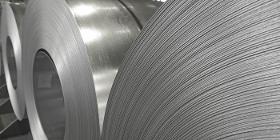
AMETEK SPECIALTY METAL PRODUCTS
United States
HPM 233® Nickel is a commercially pure wrought Nickel with low carbon. The material has excellent corrosion resistance with high thermal and electrical conductivities. A high thermal coefficient of electrical resistance makes it suitable for temperature sensors, and electronic components. The alloy can be formed by all conventional cold-forming methods and can be joined by welding, brazing and soldering. The corrosion resistance is generally very good in most mediums, although it is subject to intergranular embrittlement by sulfur compounds above 315°C. Available Sizes: HPM 233® Nickel is available from Hamilton Precision Metals as strip product in thicknesses from 0.0005” to 0.020” (0.0127 mm to 0.508 mm) in widths up to 12.0” (304.8 mm). It is available as foil as thin as 0.000100” (0.00254 mm) in 4.0” (101.6 mm) maximum width. The material conforms to ASTM B162, ASTM F3, and UNS N02233.
Request for a quote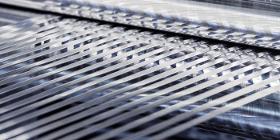
AMETEK SPECIALTY METAL PRODUCTS
United States
HPM® 201 Nickel is a commercially pure wrought Nickel. With low carbon, the material has excellent corrosion resistance with high thermal and electrical conductivities. Making it perfect for use in flexible metal foil heaters. The alloy can be formed by all conventional cold-forming methods and can be joined by welding, brazing and soldering. The corrosion resistance is generally very good in most mediums, although it is subject to intergranular embrittlement by sulfur compounds above 315°C. Available Sizes: HPM® 201 Nickel is available from Hamilton Precision Metals as strip product in thicknesses from 0.0005” to 0.020” (0.0127 mm to 0.508 mm) in widths up to 12.0” (304.8 mm). It is available as foil as thin as 0.000100” (0.00254 mm) to 4.0” (101.6 mm) maximum width. The material conforms to ASTM B162, and UNS N02201.
Request for a quote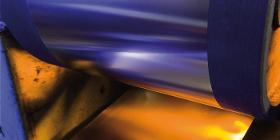
AMETEK SPECIALTY METAL PRODUCTS
United States
SS 436 is a corrosion and heat resistant ferritic Chromium Steel. It can be polished to appear similar to Chromium plate. The material is magnetic in both annealed and cold rolled tempers. This grade of ferritic stainless steel has shown a greater resistance to ridging or roping defects as compared to type 430 stainless steel. The alloy can be readily blanked and formed. The material can be resistance welded, brazed, and soldered. SS 436 is resistant to atmospheric corrosion and fresh water, but it not resistant to most salts and seawater. It is resistant to scaling by oxidation up to about 1400°F. Available Sizes: SS 436 is available from Hamilton Precision Metals as strip product in thicknesses from 0.001” to 0.050” (0.0254 mm to 1.27 mm) in widths up to 15.0” (381 mm). The material conforms to ASTM A240 and UNS S43600.
Request for a quoteDo you sell or make similar products?
Sign up to europages and have your products listed
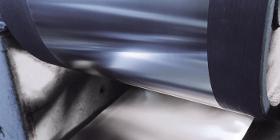
AMETEK SPECIALTY METAL PRODUCTS
United States
SS 305 is an austenitic Chromium-Nickel stainless steel with excellent corrosion resistance, and is suitable for very severe cold forming operations. A high nickel content reduces the work hardening rate so that it can be formed into electronic components and remain non-magnetic. The alloy is readily formable and work hardens slowly.It has good resistance to nitric and sulfuric acid solutions although it will not resist halogen acids. The alloy can be satisfactorily welded, brazed, and soldered. Available Sizes: SS 305 is available from Hamilton Precision Metals as strip product in thicknesses from 0.0005” to 0.050” (0.0127 mm to 1.27 mm) in widths up to 12.0” (304.8 mm). It is also available in foil as thin as 0.000200” (0.00508 mm) in widths of 4.0” (101.6 mm) maximum. The material conforms to ASTM A240, QQS-766, and UNS S30500.
Request for a quote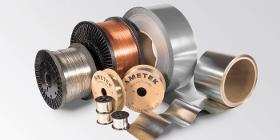
AMETEK SPECIALTY METAL PRODUCTS
United States
HPM® X-750 is a precipitation –hardenable nickelchromium alloy which is well suited for a wide range of corrosive and oxidizing environments where strength must be maintained to elevated temperatures. The alloy composition provides a product which performs well at elevated temperatures up to 1300° Farenheit. The strength can be increased by heat treatment. The alloy is readily formable in the annealed temper and can be joined by the standard welding and brazing processes. Available Sizes: HPM® X-750 is available from Hamilton Precision Metals as strip product in thicknesses from 0.001” to 0.025” (0.0254 mm to 0.635 mm) in widths up to 12.0” (304.8 mm). The material conforms to AMS 5542, AMS 5598 and UNS N07750.
Request for a quoteResults for
Brazing and welding - Import exportNumber of results
20 ProductsCountries
Company type
Category